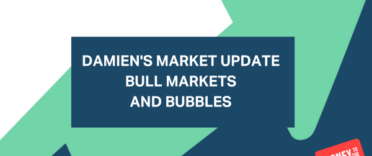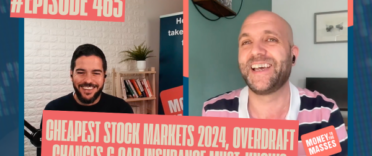The 124th episode of my weekly YouTube show where I discuss what is happening in investment markets and what to look out for. This week I talk about why the dollar is important when trying to understand what is happening in investments markets.
Each show lasts between 5-10 minutes and is aimed at DIY investors (including novices) seeking contemporary analysis to help them understand how investment markets work.
Subscribe to my YouTube channel to receive my weekly analysis of investment markets or alternatively, you can listen via my weekly Midweek Markets podcast below.
Midweek Markets weekly podcast
Other ways to watch, listen and subscribe
You can listen to other episodes and subscribe to the show by searching 'Money to the Masses' on Spotify or by using the following links:
Abridged transcript - Midweek Markets episode 124
So last week I explained how the price of natural gas had soared in 2021, and in particular over the last couple of months. Even after I published last week’s show the price of natural gas just kept soaring.
By the end of that day the price of natural gas had hit a new all-time high, meaning that the price had risen six-fold so far in 2021. As an aside if you want to get an insight into the latest gas price moves using the stock app on your phone then search for TTF=F.
The surge in the price of energy caused bond and equity markets to weaken as bond yields rallied as inflation expectations soared. The 10 year US treasury yield, for example, hit 1.55% which is the highest level since May. However, within 24hours of the last show airing, equity and bond markets stabilised after Russian President Vladimir Putin suggested that Russia may well increase its gas supply to Europe. Whether this is political posturing or not, the impact of the news on the natural gas price was immediate, with the price falling more than 20%. However, that still means that the price of natural gas has risen five-fold in 2021.
However, it was enough to give some respite to equity and bond markets. Over the last week we’ve seen the FTSE 100 rebound by 2% to sit back above 7100, while the more domestically focused FTSE 250 gained just under 1%
In the US an initial surge in US stock market indices following the tumble in gas prices and an extension of the US debt ceiling (which is something for another day) evaporated and are now flat over the week. Bond yields stabilised but kept rising gradually, with the 10 year US treasury yield breaking back above 1.6%.
Understandably all eyes were on the latest US inflation data which was released just before I recorded this show. It showed that US consumer price growth rose by 5.3% in September, which is a 13-year high. This was broadly in line with market expectations and so far the market reaction has been fairly muted, although tech stocks look to open higher in the US. But as is often the case with the market’s reaction to inflation and monetary policy expectations any reaction can be delayed.
Although inflationary pressures remain the market seems to be consolidating and digesting last week’s aggressive moves. In the UK a former member of the Bank of England Monetary Policy Committee, Andrew Sentance, wrote a piece in The Times that concluded that “It is time for interest rates to rise, but for taxes to be held down. That is the way to ensure we have a solid recovery and head off inflationary pressures”.
Interestingly the value of the pound reacted very little to the news, even though you might have expected it to rally strongly. It still sits around $1.36 for example, But, when considering the dollar/pound exchange rate, the stalling has also been a result of the dollar strengthening. The reason for that are the concerns over stagflation taking holed (i.e. slowing economic growth and inflation at the same time). In this environment, the dollar tends to strengthen as people seek haven assets, and with bonds falling in value the dollar becomes an obvious choice.
In an environment where we get inflation expectations rising alongside side rising economic growth then we tend to see the dollar fall. This is the “reflation trade” environment that we had earlier in the year which is great for cyclical stocks. Often if you get the dollar right when allocating or choosing your investments you get almost everything else right. Some analysts are suggesting that the dollar strength has run its course and we could soon see the trend reverse.
If we do start to see the dollar fall then we may reenter a world where equities and bond yields rally at the same time again. So keep an eye on the dollar index (which measures the strength of the dollar against a basket of currencies) for clues. You can follow this using DX-Y.NYB on your stock app on your phone. If you go back and look at the chart over the last year you can see the ebbs and flows which also coincide with the market’s narrative at the time of whether we were entering a period of reflation or stagflation. This ultimately dictated the assets that won and lost over the coming months.
So for now the consensus seems to be that inflation is here to stay, and interest rate rises are coming. The question is what type of inflation will it be, which has been the question for much of 2021. The dollar may hold the answer.



